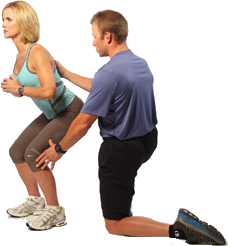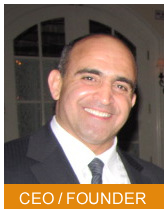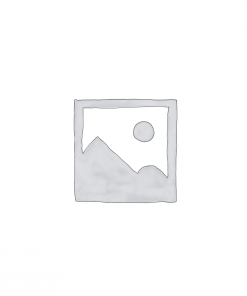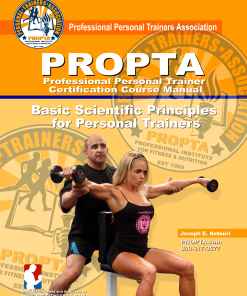
Personal Trainer Certification home study course. USA & International.
What does it take to achieve the best personal trainer certification and Develop a thriving personal training business?
First, you must complete the most thorough and comprehensive personal trainer certification available in the country.
PROPTA offers our students the most in-depth training program to ensure our students can launch a successful and rewarding career. When noted bodybuilder and Mr. USA title holder, Joe Antouri created this organization, it was to provide the finest educational program to professional fitness and conditioning trainers. It has since become one of the leading educational bodies in the United States, encompassing multiple areas of expertise including, nutrition, weightlifting, dance, fitness, and youth fitness coaches.
When PROPTA graduates complete their certificate program, they hold the best personal trainer certification available in the industry.
The curriculum will include the following:
Introduction to Kenisiology and Exercise Physiology, Resistance and Free weight training, Anaerobic and Aerobic training, Hands on Proper practical application, Flexibility and stretching, Designing exercise programs, Adult and Older fitness, Business application and legal issues, Body fat testing and measurement and more.
The following steps are required for completion:
- Written exam submitted by e-mail only.
- Practical exam hands on proctored by a PROPTA director professional athlete examiner in a gym atmosphere.
- 20 clinical hours prior to practical exam.
- CPR Certification (can be obtained during curriculum and must be completed to graduate)
Personal Trainer Course Objectives:
This course provides students in-depth knowledge in the topics listed below.
Understanding the human body
The lecture and text book course material examines the anatomy of muscle which pumps blood throughout the body, and discusses the distinction between arteries, veins, and the location of the heart. The relation between muscle function, blood flow, circulation, the nervous system and skeletal system and the direct correlation to fitness and exercise provides students with the base knowledge of proper bio-mechanics.
Proper Bio-mechanics
Biomechanics is defined as the application of mechanical principles in the study of movement for all living organisms. In other words, biomechanics is the science that is concerned with analyzing how and why bodies move in the way that they do.
Muscle movement
With over 600 muscles in the human body, understanding how they attach, work in synergy with other body parts is a crucial part of your education.
Muscles can only contract and pull. Therefore, joints have to have two or more muscles working opposite each other. As the first muscle contracts, so the second muscle relaxes. As the second muscle contracts, so the first muscle relaxes. This is known as antagonistic muscle action.
For this to occur, one end of the muscle must be fixed, this is known as the origin. When the muscle contracts the other end of the muscle then moves towards the origin.
The end that moves is known as the insertion.
Muscle insertion
The origins of both the triceps and the biceps are at the top of the humerus near the shoulder joint. This is the muscle insertion point. As the bicep contracts, the lower arm (radius and ulna) moves up towards the shoulder. The triceps relax to allow this movement to happen. It is important to understand how all muscles work together, how they attach to bone, tendons, and ligaments to ensure coaches are preparing safe workout routines for their students.
Basic nutrition
Nutrition and Body Building work together to bring results, build muscle mass and reduce injury. Without proper nutrition fat loss or muscle gain is unattainable. Proper food and supplement application is a must. Understanding food and supplements ensures you are that personal trainers can provide proper advice.
Muscular system
The muscular system is comprised of the total of muscles throughout the body that move the skeleton, maintain posture through steady contraction, and generate heat through cell metabolism. Humans have three types of muscle.
Skeletal system
The skeletal system is the system of bones, associated cartilages, and joints of human body. Together these structures form the human skeleton. Skeleton can be defined as the framework of the human body around which the entire body is built. Almost all the hard parts of human body are components of the human skeletal system.
Nervous system
The nervous system is made up of all the nerve cells in your body. It is through the nervous system that we communicate with the outside world and, at the same time, many mechanisms inside our body are controlled. The nervous system takes in information through our senses, processes the information and triggers reactions, such as making your muscles move or causing you to feel pain.
Cardiovascular system
The blood circulatory system (cardiovascular system) delivers nutrients and oxygen to all cells in the body. It consists of the heart and the blood vessels running through the entire body.
Older adult training
As people age loss, of muscle can occur. Known as Sarcopenia, lack of physical activity is not the only contributing factor. Decreased hormones, and decreased Protein synthesis can all occur. PROPTA students will be equipped to prepare a work out regimen for their older clientele that will assist in increasing flexibility, strength and balance.
Registering for the course
To register for a course by the Personal Trainers Association, you must hold an HS diploma. Everyone is qualified to start the course of study.
If you are already an athlete and want to be recognized for your hard work, PROPTA will reward you. If you are a competitor from any sport and belong to any association, PROPTA will take that into consideration and reward you with an advanced level status. PROPTA recognizes that you have put in a lot of hard work to achieve your status as a successful athlete.
Am I eligible for Personal Trainer certificate courses?
The following eligibility requirements have been adopted for our Personal Trainer certification exams!
- You must be at least 18 years of age.
- You must hold current adult CPR and AED certificate at the time of the Final exam.
- CPR certification is required for graduation. Even if you pass, your certification will not be issued without proof of CPR Certification.
- All though, if you are 16 and would like to get into this wonderful business or even learn proper technique and balanced education, you may take the course with the supervision of a coach or a parent. Please email or call us to inquire.



